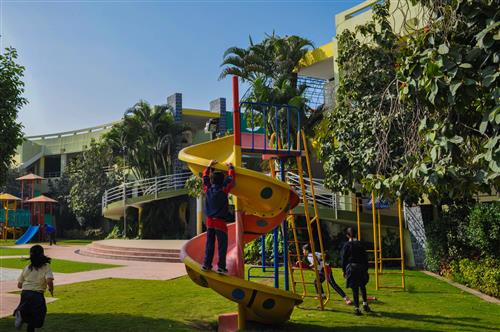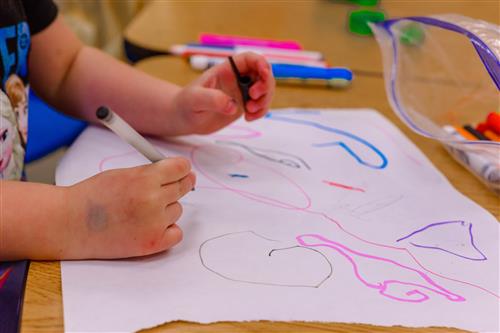Occupational Therapy and Physical Therapy


School based occupational therapy and physical therapy are related services to special education. A student with an Individualized Education Plan (IEP) is eligible to receive a related service, such as occupational or physical therapy, if that student requires the related service in order to benefit from his/her exceptional education programming. Occupational therapy/physical therapy is an important part of the collaborative team that supports ESE students towards developing strategies for success in schools. The provision of therapy and outcome is based on the impact the disability has on educational performance rather than on the disability itself. Deciding whether a student may need occupational/physical therapy in order to benefit from exceptional education programming, requires the consideration of multiple factors. The physical environment, needs of the student, specific programming currently in place are a few of the many context specific factors that determine whether a student requires a related service in order to benefit from his/her exceptional educational programming. If a student has an identifiable therapy need that does not affect the student’s ability to learn, function, and profit from the educational experience, therapy is not the responsibility of the school system.
Frequently Asked Questions
If I have a concern, what should I do?
Share your concerns and observations with you child’s teacher or ESE Support Specialist. This may be done during an informal conference or as part of the Individual Education Plan (IEP) meeting.
What happens after I express my concerns?
A student who is observed to have specific difficulties in the areas of fine motor, visual motor, self-care, sensory processing skills, gross motor, positioning, functional mobility, balance, and endurance and who has not responded to interventions in their primary ESE programs may be referred for an occupational therapy/physical therapy evaluation. The evaluation will be scheduled once a referral and consent for re-evaluation are completed, signed by the parent/guardian, and forwarded to the OT/PT department. The student’s overall academic/ developmental skills, physical skills and medical considerations are taken into account as part of the evaluation. The need for therapy intervention is based on the student’s level of performance, potential for improvement in the areas assessed, and level of support already provided by the Exceptional Student Education (ESE) program.
How are Therapy services provided?
Intervention can be provided by direct service or consultation. Direct therapy intervention is a model in which the therapist is primarily responsible for working with the student and implementing strategies to address the areas of need. This information is shared with the teachers on a regular basis. Consultation is a model in which the therapist and teacher work collaboratively to come up with strategies to address student needs and the teacher is primarily responsible for working with the student. The therapist consults with the teacher on a regular basis to determine whether strategies are successful or require modification to meet student needs. The continuum of services utilizes a collaborative, integrated approach that may include, but is not limited to the following:
Direct support for the student to access educational activities and the school environment
Collaborating with the members of the team to develop and implement strategies and modifications that support a student's individualized goals and objectives
Assessing the student's educational need for modification of environment, educationally relevant equipment, technology, and assistive devices
Education of the teachers, family members and others about the impacts of disability on educational performance, and the potential benefits of adaptations or accommodations
Modeling and training classroom staff and parents on how to implement educationally relevant therapeutic strategies and use adapted equipment, assistive technology, and devices
Liaison with medical professionals
What is the difference between Educational Therapy and Medical Therapy?
Educational Therapy
Only PT requires a physician's prescription for direct therapy
Focus is on a student's readiness and function as it relates to curriculum/learning and school access
Address functional activities within the classroom and school campus, directly related to accessing their education and curriculum
OT address' classroom posture, seating and positioning, fine motor skills, self-care skills as related to the school environment, visual motor skills and sensory processing issues as they relate to accessing the students education
PT address' classroom posture, seating and positioning, gross motor skills, functional mobility skills ( stairs, playground, transitions within and between classes and areas of school campus ) as related to accessing the students educational environment.
Frequency is based on what requires a trained therapist in order to have access to exceptional student education
Requires the student to be in an exceptional student education program and may be provided in a group setting for OT
Assessments occur in the educational environment (classroom, playground, cafeteria, etc. )
Goals/objectives are developed through collaboration with the whole team and addressed by everyone working with the child; goals are not identified as OT and PT goals
Intervention is provided within the educational setting typically the classroom or other relevant learning site on campus
Therapists may make recommendations for equipment to be used on the school campus
Medical Therapy
Requires a physician's prescription for OT and PT
Focus on developmental motor milestones
Goal of treatment may be improving the child's quality of movement and attempting to eliminate or minimize the child's deficits
OT's address sensory processing disorders, food aversion disorders, fine motor delays, visual motor skills, activities of daily living (feeding, dressing, hygiene), casting/bracing, stretching, and /or strengthening
PT's address strengthening, stretching, balance, ambulation with or without an assistive device, visual motor skills and /or hand-eye coordination
Frequency is dependent upon insurance and other payment sources
Intervention is typically delivered in a 1:1 model and depends on the child's diagnosis
Assessments are completed in a clinical or home setting
Goals/objectives are determined by a therapist based on testing (standardized and observation in the clinic or home) and may be developmental/medical in nature
Intervention is provided in the home or clinical setting
Therapists assist the family with acquiring medical equipment through insurance; such as: ambulation devices, wheelchairs, orthotics, standers, activity chairs, etc.
Contact Information
Jennifer Mahovlich, OTR/L
Program Specialist- OT / PT
Brevard Public Schools- ESE Program Support
321-633-1000 x11592
Email Jennifer Mahovlich
